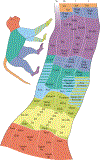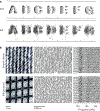The neural mechanisms of manual dexterity
- PMID: 34711956
- PMCID: PMC9169115
- DOI: 10.1038/s41583-021-00528-7
The neural mechanisms of manual dexterity
Abstract
The hand endows us with unparalleled precision and versatility in our interactions with objects, from mundane activities such as grasping to extraordinary ones such as virtuoso pianism. The complex anatomy of the human hand combined with expansive and specialized neuronal control circuits allows a wide range of precise manual behaviours. To support these behaviours, an exquisite sensory apparatus, spanning the modalities of touch and proprioception, conveys detailed and timely information about our interactions with objects and about the objects themselves. The study of manual dexterity provides a unique lens into the sensorimotor mechanisms that endow the nervous system with the ability to flexibly generate complex behaviour.
© 2021. Springer Nature Limited.
Conflict of interest statement
Competing interests
The authors declare no competing interests.
Figures





References
-
- Billard A & Kragic D Trends and challenges in robot manipulation. Science 364, eaat8414 (2019). - PubMed
-
- Mathis A et al. DeepLabCut: markerless pose estimation of user-defined body parts with deep learning. Nat. Neurosci 21, 1281–1289 (2018). - PubMed
-
- Jeannerod M The Neural and Behavioural Organization of Goal-Directed Movements (Clarendon Press/Oxford University Press, 1988).
Publication types
MeSH terms
Grants and funding
LinkOut - more resources
Full Text Sources

